What is useful and harmful about pork — 6 scientific facts
Pork is one of the most commonly consumed types of meat in the world. It contains a large amount of proteins, vitamins and minerals that have a positive effect on the human body.
Scientists claim that eating pork will help maintain muscle mass, improve physical performance, and reduce the risk of developing a number of diseases of the brain and thyroid gland.
However, excessive consumption of pork is associated with negative health effects. It is contraindicated in the presence of cardiovascular and some other diseases.
6 useful properties
Below are the 6 main facts about the benefits of pork based on evidence.
1. A source of nutrients
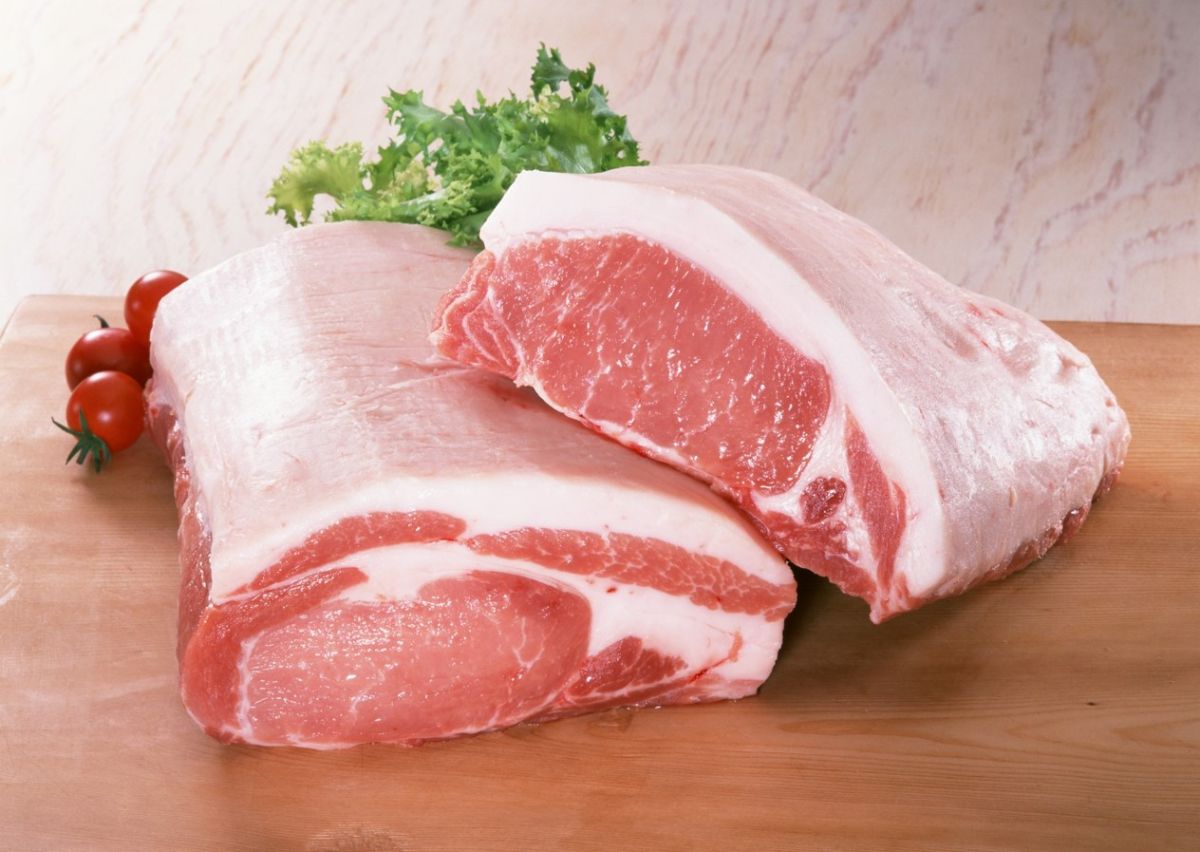
Pork has a fairly high calorie content – from 220 to 290 calories per 100 grams of product and contains the following biologically active substances:
| Component Name | Specific gravity or percentage of daily requirement (per 100 grams of meat) |
| proteins | About 26 grams |
| fats | About 21 grams |
| carbohydrates | 0 grams |
| Vitamin B1 | 35 % |
| Vitamin B3 | 19 % |
| Vitamin B12 | 15 % |
| Vitamin D | 14 % |
| Vitamin B6 | 13 % |
| sodium | 49 % |
| selenium | 18 % |
| phosphorus | 14 % |
| zinc | 14 % |
| potassium | 8 % |
| iron | 4 % |
Meat mostly consists of proteins with essential amino acids (histidine, lysine, leucine, threonine, valine and phenylalanine, etc.). This makes it extremely useful for people who are engaged in active physical training or recovering from severe surgical interventions.
Vitamins and minerals in pork also have important beneficial properties:
- Vitamin B1. Plays an important role in the work of enzymatic systems.
- Selenium. Has an antioxidant effect and strengthens the immune system .
- Zinc. Is important for Brain health and the work of the immune system.
- Vitamin B3. Participates in the formation of shaped blood elements and the work of neurons.
- Vitamin B12. Is required for Erythrocyte synthesis and redox processes.
- Vitamin B6. Regulates metabolism, is responsible for the growth and development of the body.
- Phosphorus. Supports Bone strength and metabolism in general.
- Iron. Is necessary for the correct operation of the red blood germ.
2. Maintaining muscle mass
 Pork, like most animal products, is high in protein substances, which are important for maintaining and building muscle mass.
Pork, like most animal products, is high in protein substances, which are important for maintaining and building muscle mass.
Regular physical exercise combined with sufficient protein intake is the key to muscle preservation.
Specialists of the University of Texas (USA) revealed that insufficient protein intake can cause the development of muscle fiber atrophy (with excessive exertion) or the development of sarcopenia (in the elderly) – age-related degeneration of muscle structure.
A decrease in the mass of muscle fibers inevitably leads to a restriction of physical activity and a decrease in the quality of life, so the diet should include a sufficient amount of protein – about 120-150 grams per day.
3. Improving physical performance
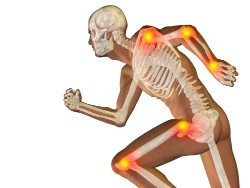 Regular consumption of meat not only helps to maintain and gain muscle mass, but also improves the function of the musculoskeletal system.
Regular consumption of meat not only helps to maintain and gain muscle mass, but also improves the function of the musculoskeletal system.
Pork meat contains a large amount of valuable biologically active substances: creatine, taurine and beta-alanine.
Creatine, according to scientists , is an important source of energy and participates in the growth of muscle tissue. That is why creatine is an integral part of the bodybuilding diet.
Beta-alanine, as claimed experts from the UK, it is necessary for the production of carnosine in muscle tissue, which increases the effectiveness of physical exercise, helps to reduce the severity of fatigue after training.
Taurine, according to the data scientists from Thailand, supports the functioning of the cardiovascular system, improves the supply of skeletal muscles with oxygen and nutrients.
4. Improving the condition of the skin and hair
 Research conducted under the guidance of French specialists, revealed
that pork contains a large amount of gelatin and collagen. These substances maintain the elasticity and smoothness of the skin, have a beneficial effect on hair growth.
Research conducted under the guidance of French specialists, revealed
that pork contains a large amount of gelatin and collagen. These substances maintain the elasticity and smoothness of the skin, have a beneficial effect on hair growth.
Regular consumption of meat significantly reduces the risk of wrinkles on the face, as well as a number of infectious and inflammatory skin diseases.
5. Normalization of the brain
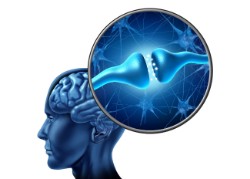 Pork meat is rich in vitamins of group B. In the opinion of
British experts, these vitamins improve brain function, enhance
concentration of attention
and visual-spatial perception.
Pork meat is rich in vitamins of group B. In the opinion of
British experts, these vitamins improve brain function, enhance
concentration of attention
and visual-spatial perception.
With the systematic inclusion of pork in the diet, various disorders from the side are less common of memory , as well as neurodegenerative pathologies (Alzheimer's disease or Peak).
Meat also has a beneficial effect on the course of depressive disorders and reduces the risk of stroke.
6. Improving the functioning of the thyroid gland
 Pork is rich in selenium, which, according to the data
of the scientific community, regulates the production of thyroid hormones and normalizes the course of metabolic processes in it.
Pork is rich in selenium, which, according to the data
of the scientific community, regulates the production of thyroid hormones and normalizes the course of metabolic processes in it.
When taking sufficient amounts of selenium, diseases such as autoimmune thyroiditis, nodular dystrophy and thyroid cancer are less common.
Negative properties
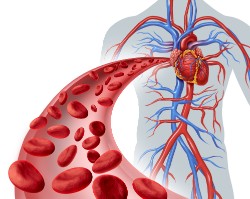 Unfortunately, eating pork is associated with a risk to humans. The undesirable effects include:
Unfortunately, eating pork is associated with a risk to humans. The undesirable effects include:
- Allergic reactions. Hypersensitivity to pork proteins is uncommon (frequency – 1:1000) and can be characterized by any course: from urticaria to anaphylactic shock.
- Development of cardiovascular diseases. Research show there is a direct link between eating red meat and a high risk of heart and vascular diseases. The likelihood of pathologies increases with the concomitant presence of risk factors: low consumption of fruits and vegetables, physical inactivity, smoking and overeating.
- The appearance of oncological diseases. Unfortunately, pork (especially fried) contains a number of carcinogenic substances that increase the likelihood of developing malignant tumors of the colon and rectum , mammary glands , liver , and prostate for men.
- Helminthiasis infection. In poorly processed pork meat may be present parasites are pig tapeworm, trichinella (roundworm) and even toxoplasma. Therefore, full–fledged heat treatment of meat is the main way to prevent diseases caused by the parasites described above.
- Hepatitis E infection. According to the data World Health Organization pig liver consumption is associated with a high risk of hepatitis E.
- The development of multiple sclerosis. The relationship between the development of this disease and regular consumption of pork has been proven back in 1986.
- Metabolic disorders. Pork increases the level of free fats and cholesterol in the blood, therefore, it is not recommended to consume it in large quantities in the presence of metabolic syndrome or individual cardiovascular pathologies.
Application in cooking
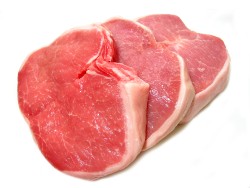 Pork has special taste qualities, which has made it a very common product in many cuisines of the world. It has a pronounced meaty, slightly sweet taste. The meat is juicy (due to streaks of fat) and has a rich aroma.
Pork has special taste qualities, which has made it a very common product in many cuisines of the world. It has a pronounced meaty, slightly sweet taste. The meat is juicy (due to streaks of fat) and has a rich aroma.
Pork can be subjected to almost any cooking method. Dried, fried, boiled, salted (bacon), baked pork, as well as steamed or grilled (shish kebab) are widely used.
Meat is often processed into minced meat in order to cook cutlets, meatballs, sausage, balyk and other delicious dishes. Also, pork meat is often used to make jelly, first courses or broths.
It is important to note that different parts of the pig are used in different ways:
- Tenderloin. Is lean meat without bones (part of the carcass above the spine under a layer of subcutaneous fat and skin). It is used for cooking kebabs, medallions or simply fried in a frying pan.
- Neck. Soft pieces cut from the neck area. This type of meat is extremely tender and juicy, has layers of fat. Ideal for frying or stewing.
- Ham. This is the part of the animal's leg around the hip bones. Schnitzels or chops are usually prepared on its basis, less often they are baked or stewed in a large piece.
- Shoulder blade. Spatula meat is very tough and requires prolonged cooking or stewing.
- Loin . It is a part of the back with a bone. It is used for pilaf, stews or broths.
- Brisket. Is located on the sides of the pig's abdomen. It is usually fried or cooked with bacon.
- Pork ribs. Most often they are baked in the oven (in foil), you can also cook them on the grill or over a campfire.
- By-products . The pig's heart, kidneys and liver have become widespread. They are used for frying in its pure form, making pates and even jelly.
- Language. Is boiled or subjected to prolonged frying. It serves as a delicacy in many countries of the world.
- Ears. Are popular in Korean cuisine. First they are fried, and then served with hot sauce.
- Small. Is a fat made exclusively from lard. It is used for frying other foods (instead of butter) or spread on bread.
Conclusion
Thus, pork meat has great biological potential. It contains a number of essential proteins, fats, as well as vitamins and minerals.
With regular consumption, meat allows you to maintain the volume of muscle tissue, as well as improve the effectiveness of physical exercises; normalize brain function, enhance the aesthetic properties of skin and hair, prevent a number of diseases from the thyroid gland.
But in some situations, pork can be dangerous to health. In order to reduce the risk, it is recommended to heat–treat meat, and in the presence of chronic diseases, consult a doctor beforehand.





